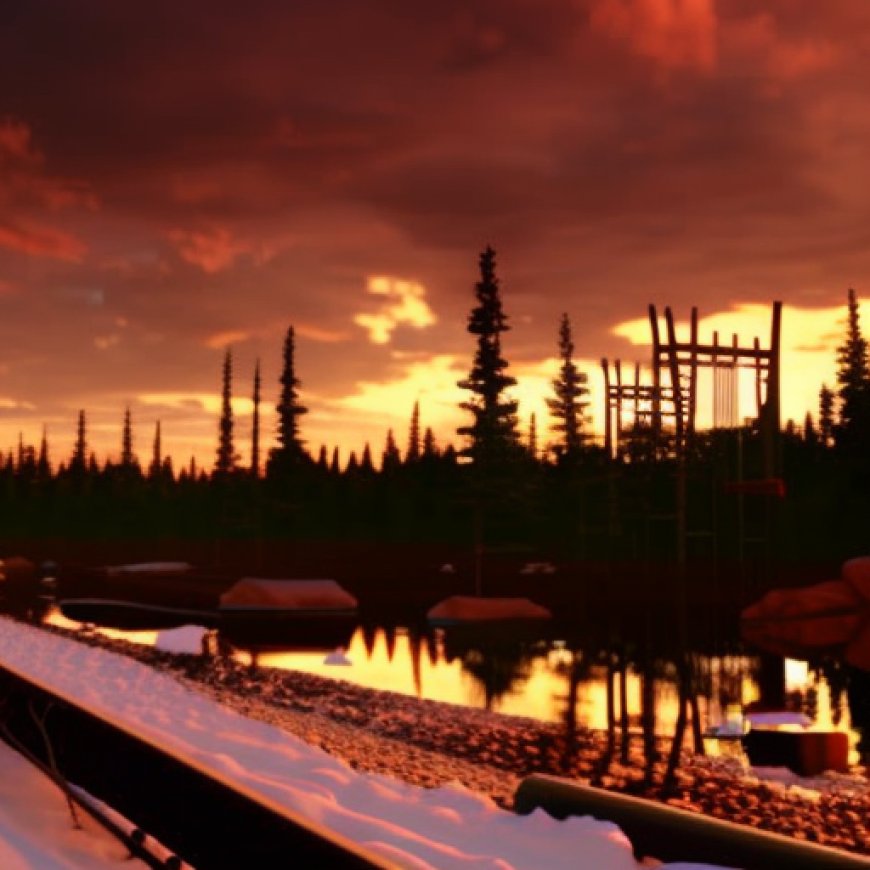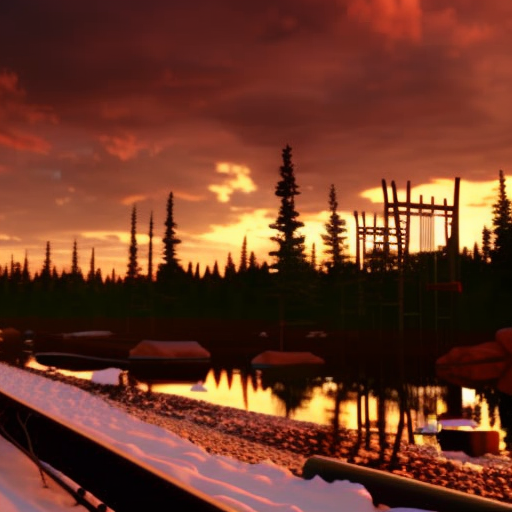Enbridge oil pipeline construction records 4th aquifer breach in northern Minnesota
Enbridge oil pipeline construction records 4th aquifer breach in northern Minnesota CBS Minnesota


ST. PAUL, Minn. —
A fourth aquifer breach has been confirmed in northern Minnesota stemming from a Canadian oil company’s construction of an oil pipeline replacement in the region, state officials said.
Sustainable Development Goals (SDGs) Emphasis:
- Goal 6: Clean Water and Sanitation
- Goal 13: Climate Action
- Goal 15: Life on Land
Officials with the Minnesota Department of Natural Resources confirmed the breach occurred near Moose Lake in Aitkin County. Officials said Enbridge is working to fix the rupture, in which the layer of earth above an aquifer is punctured, causing the water to leak to the surface and possibly introducing pollutants.
It’s the fourth confirmed breach along the Line 3 pipeline route, which started operating in the fall of 2021 and generated fierce opposition from environmental activists and Native American tribes. Last October, state regulators announced that Enbridge would pay more than $11 million for water quality violations and the three previous aquifer breaches.
Environmental Threats to Aquifers
An aquifer is a natural underground reserve of fresh water capable of being tapped by wells. Environmentalists say such groundwater reserves face a multitude of threats from human populations, including depletion from overuse, pollution from agriculture and septic systems, and contamination from pipeline construction and spills.
Groundwater at the Moose Lake breach is flowing to the surface at about 10 to 15 gallons per minute, department officials said. That’s “considerably lower” than the rate at which groundwater initially flowed from the other three breaks, the agency said.
Enbridge will submit a plan to correct the Moose Lake area damage and will implement it when it’s approved, company spokeswoman Juli Kellner said in a statement. The aquifer breaches don’t involve the pipe itself, she said. It stems from sheet-metal piling driven into the ground used to reinforce the trenches that crews work in.
Enbridge Statement:
“Enbridge has been working with the DNR to monitor and evaluate the Moose Lake site following Line 3 construction. As part of its ongoing post-construction monitoring activities, Enbridge reported the groundwater flow to the DNR and is providing information as requested. Enbridge is providing a corrective action plan for this location as requested and will implement it upon approval.
“Aquifer issues on Line 3 did not involve the pipe itself, nor drilling, but related to sheet metal piling typically used in construction to reinforce the trench for worker safety.
“The Line 3 Replacement Project was built under the most comprehensive regulatory framework in the history of Minnesota resulting in the issuance of over 60 federal, state, local, and tribal approvals. These approvals included the strictest environmental requirements in state history. Enbridge, with the support of union and tribal contractors, implemented strong environmental safeguards and protections to meet these regulatory requirements and protect natural resources. This included construction oversight by independent environmental agency and tribal cultural monitors with the authority to stop construction at any time. When events were identified, Enbridge reported them transparently and corrected them consistent with plans approved by the agencies.”
Minnesota DNR Statement:
“The Minnesota Department of Natural Resources is investigating Line 3-related construction impacts near Moose Lake. This is a remote and hydraulically complex site near Swatara in Aitkin County.
“Through our ongoing investigation, including review of a series of groundwater reports that the DNR ordered, we have recently confirmed that there is a confined aquifer breach at the site. The groundwater flow at the surface from the Moose Lake aquifer breach is estimated at 10-15 gallons/minute, considerably lower than the 100-300+ gallons/minute initially observed at the three other confirmed aquifer breach sites previously investigated by the DNR (Clearbrook, LaSalle Creek, and Mile Post 1102.5).
“As part of our investigation, the DNR has required Enbridge to submit a corrective action plan and we will evaluate all corrective action options. The DNR will continue to assess all available information regarding construction-related impacts and restoration work along the Line 3 corridor.”
NOTE: Featured video is from May 4, 2023.
SDGs, Targets, and Indicators
-
SDG 6: Clean Water and Sanitation
- Target 6.3: By 2030, improve water quality by reducing pollution, eliminating dumping and minimizing release of hazardous chemicals and materials.
- Indicator: The presence of aquifer breaches and the potential introduction of pollutants into the water can be used as an indicator to measure progress towards this target.
-
SDG 13: Climate Action
- Target 13.1: Strengthen resilience and adaptive capacity to climate-related hazards and natural disasters in all countries.
- Indicator: The construction of the oil pipeline replacement and the subsequent aquifer breaches can be seen as a climate-related hazard and a potential natural disaster, highlighting the need to strengthen resilience and adaptive capacity.
-
SDG 15: Life on Land
- Target 15.1: By 2020, ensure the conservation, restoration, and sustainable use of terrestrial and inland freshwater ecosystems and their services.
- Indicator: The aquifer breaches caused by pipeline construction can lead to the contamination and depletion of groundwater resources, affecting terrestrial and inland freshwater ecosystems.
| SDGs | Targets | Indicators |
|---|---|---|
| SDG 6: Clean Water and Sanitation | Target 6.3: By 2030, improve water quality by reducing pollution, eliminating dumping and minimizing release of hazardous chemicals and materials. | The presence of aquifer breaches and the potential introduction of pollutants into the water can be used as an indicator to measure progress towards this target. |
| SDG 13: Climate Action | Target 13.1: Strengthen resilience and adaptive capacity to climate-related hazards and natural disasters in all countries. | The construction of the oil pipeline replacement and the subsequent aquifer breaches can be seen as a climate-related hazard and a potential natural disaster, highlighting the need to strengthen resilience and adaptive capacity. |
| SDG 15: Life on Land | Target 15.1: By 2020, ensure the conservation, restoration, and sustainable use of terrestrial and inland freshwater ecosystems and their services. | The aquifer breaches caused by pipeline construction can lead to the contamination and depletion of groundwater resources, affecting terrestrial and inland freshwater ecosystems. |
Behold! This splendid article springs forth from the wellspring of knowledge, shaped by a wondrous proprietary AI technology that delved into a vast ocean of data, illuminating the path towards the Sustainable Development Goals. Remember that all rights are reserved by SDG Investors LLC, empowering us to champion progress together.
Source: cbsnews.com

Join us, as fellow seekers of change, on a transformative journey at https://sdgtalks.ai/welcome, where you can become a member and actively contribute to shaping a brighter future.







